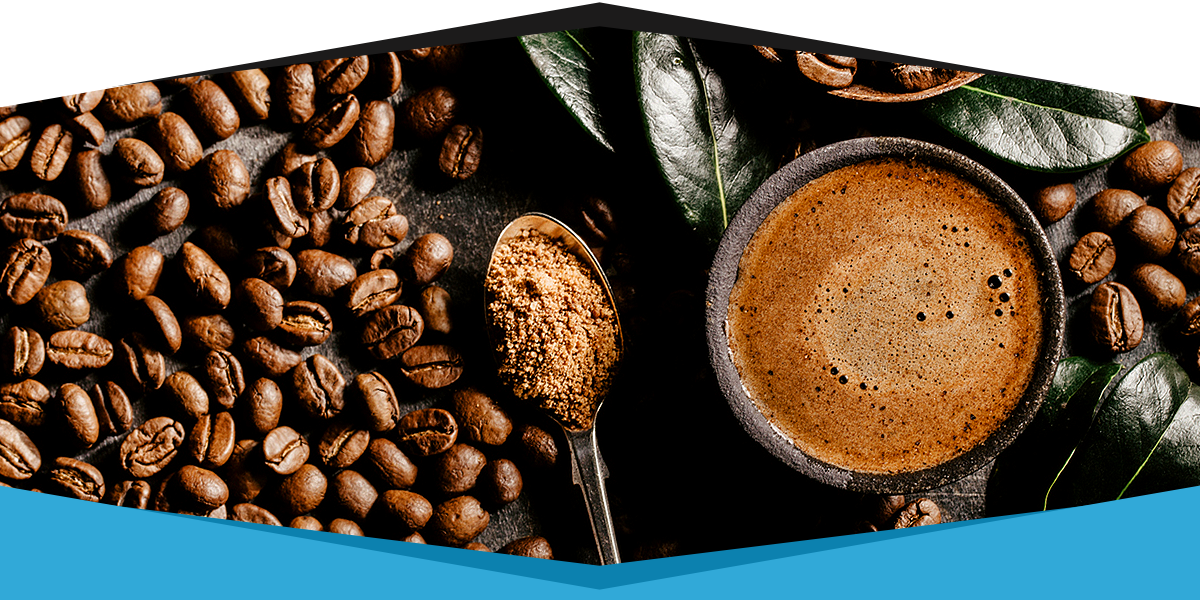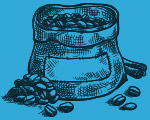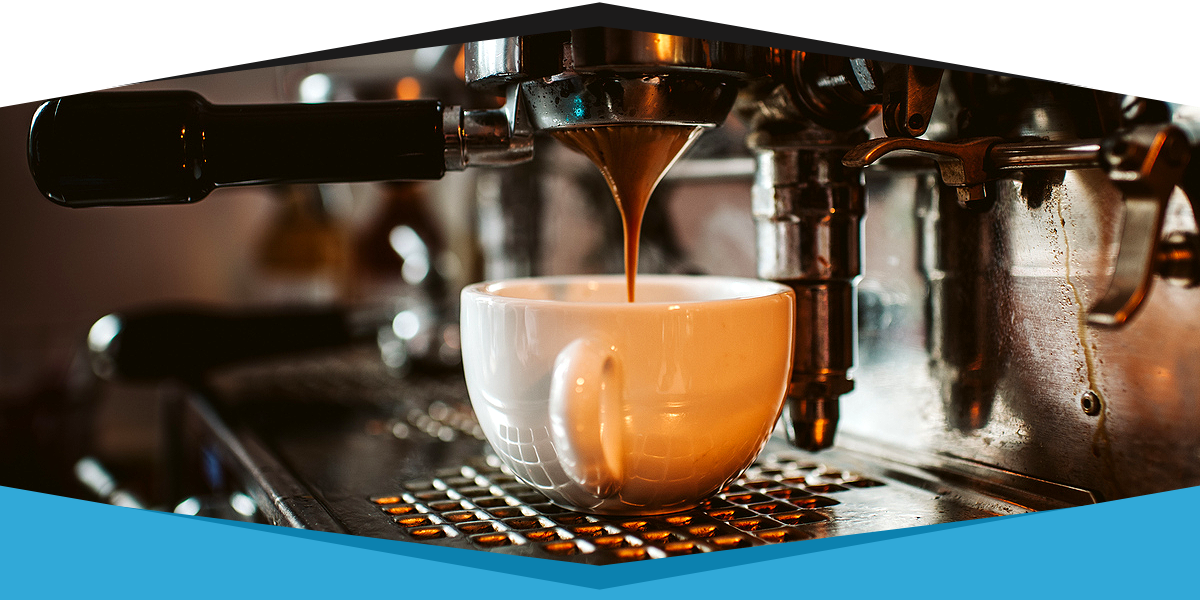Coffee Drinking Trends
Past, Present & Future
Before coffee arrived in Europe in the 1500s, people often consumed beer first thing in the morning, during work breaks, and well into the night.
The introduction of coffee into society brought about a significant change to the way members of the public carried out their day to day lives. Coffee came precisely at the right time, bringing Europe out of a centuries-old alcoholic haze and amplifying the quantity and quality of work people could do.
Coffee doesn’t get too many accolades, but it was this modest beverage that gave rise to the sobriety and the radical patterns of thought and work that shaped western civilization.
Coffee beans have seen only a slight transformation over the years, but the way coffee is brewed and consumed has evolved by leaps and bounds.
Let’s take a closer look at coffee drinking trends of the past, examine the way coffee is consumed in the present day, and look ahead to what the future might have in store for coffee lovers.


The First Coffeehouses In History
Coffee was traded in the Arabian Peninsula long before it got to Europe, and its early success can be traced back to 15th century Yemen, where Sufis were roasting beans and brewing cups of coffee to stay awake and unlock higher spiritual states.
By the sixteenth century, coffee houses were sprouting all over the Arab world. These coffeehouses quickly became the go-to social hubs for trading news and gossip and hosting games.
In Europe, the first coffee houses appeared in Venice in 1629. In a few decades, there were several thousand of them in England, especially in London. Here, a penny could get you a cup of coffee and all the news you needed.
These coffee shops evolved into gathering spaces for people with shared intellectual and professional interests. Lloyd’s Coffee House, where sailors and merchants met to get shipping news and buy insurance policies on their cargo, would grow to become Lloyd’s of London.


Coffee Culture Through Three Waves
Since those first coffee houses popped up, the global coffee industry has seen many changes. But the changes that came to define the global coffee industry came in three distinct movements. Each movement or ‘wave’ initiated significant changes in bean quality, sourcing practices, and the overall coffee experience.

The First Wave
From Novelty To Commodity
The first wave got its start in the late 1800s when coffee went from being a novelty to a commodity.
Up until this moment, coffee had been a privilege of the elite. The average person, save for the farmers who picked the beans, had virtually no access to it. As the Industrial Revolution gained traction, it made the mass production of coffee possible and made it necessary. Workers needed the alertness and energy that coffee provided to endure the long and oppressive days they spent in factories.
By the 20th century, new inventions were making it possible to freeze-dry and vacuum-seal bags of coffee, significantly increasing the shelf life of the beans. But the focus remained on the quantity rather than the quality of coffee.

The Second Wave
From Commodity To Culture
Coinciding with the cultural changes of the 1960s and 70s, coffee drinkers started expecting a lot more than access and affordability. They wanted quality coffee, and they wanted to know what was in their cups. Major coffee brands stepped in to fill this need, sourcing higher-quality coffee and publishing its country of origin.
But by far, the defining feature of the second wave was the introduction of a variety of coffee experiences. In addition to offering quality coffee, roasters and cafes began to create a culture around socialising with coffee.
With their new, relaxed design and variety of offerings, coffee shops became third spaces. They became communal places away from home or work where people could meet to talk, read, or pass time. Coffee went from being a mass, everyday commodity to a social event.

The Third Wave
The Rise Of Speciality Coffee
The third wave rolled around in the early 2000s, as coffee drinkers began to pay attention to the coffee experience and the journey, quality and history of coffee.
They also wanted to know if their coffee was grown, harvested, and processed sustainably, as well as wanting to know how beans were roasted and brewed. The coffee industry’s response to these concerns gave rise to fair-trade and ethical coffees and elevated the role of baristas.
Around the same time, consumers began to appreciate that coffee could be more than bitter and ashy flavours. Speciality coffee, which until now was a fringe sub-industry, went mainstream.
There were more specific flavour notes, roast profiles, and latte art. Branded coffee chains became the norm on every high street.

The Fourth Wave
Independent Coffee Shops
There is reason to believe that the global coffee industry has been going through its fourth wave since 2010. The defining feature of this wave is a shift from coffee preparation as an art to a science. Roasters are paying more attention to the properties of coffee, ensuring precise measurements, and optimizing things like CO2 and water quality, as well as paying attention to the roasting process, such as the use of convection roasting methods for enhanced flavour.
The fourth wave is also characterised by the growth of independent coffee retail shops. Between 2010 and 2020, London saw a 700% growth in the number of independent outlets and micro-chains. UK coffee drinkers still prefer the latte, but they have become choosier and crave more intimate interactions. Independent outlets are attracting customers with their promise of handmade coffee, tailor-made for them, and the opportunity to connect with the people in their community. Independents are also meeting the increasing demand of people who are willing to pay more for coffee with an excellent environmental or social story.


Popular Coffee Drinking Trends
Social media has accelerated the pace with which coffee drinking trends spread and fade. Recent hot trends include whipped coffee, nitro cold brews, and coffee cocktails. Whipped coffee, which was popularised through TikTok, consists of a layer of fluffy instant coffee floating on iced milk. Nitro cold brewing infuses nitrogen gas into the coffee to create a smoother texture and creamier flavour. Meanwhile, coffee cocktails are shifting from the standard sweet and creamy to more complex and nuanced tastes. Coffee drinkers are experimenting with cocktails made with a variety of botanicals, flavoured coffee syrups, and even artisanal sodas.
At the same time, plant-based milks are carving out space for themselves in the global coffee industry. Non-dairy milks made from almonds, soy, coconut, and hemp are gaining popularity among vegans, the lactose intolerant and among a growing population with dietary and health concerns.
Healthy coffee additions such as collagen creamer, which is touted to have positive effects on skin, joints and overall well being, are also riding on this trend. At the same time, coffee substitutes to replace the second or third cup of coffee are becoming commonplace, with options like matcha, golden milk latte, and brewed cacao taking the lead.
Homebrewing is also evolving, with consumers trading their traditional drip coffee machines for espresso coffee pods and capsules. For the busy worker who has no time to figure out dosing, measure the amount of water to use, or worry about grind size, capsules are a literal lifesaver. The global market for coffee pod machines is expected to grow from £11.53 billion in 2017 to £22.12 billion in 2025.


Upcoming Trends: The Future Of Coffee
In the coming years, aesthetics and community will play a more prominent role in coffee culture than coffee itself. New generations of coffee drinkers will seek out coffeehouses with quirky design elements for social media credit. At the same time, coffee drinkers emerging from the throes of a pandemic lockdown will seek out spaces and experiences that foster authentic connections.
Analysts also expect agri-tourism in the coffee industry to grow. Coffee drinkers will not be content with hearing their beans’ story of origin, as they will seek coffee growers and processors the same way wine lovers go to vineyards and wine-tasting events. They will want first-hand accounts of the stories of their coffee. Perhaps more importantly, they will want to connect with the people and places that make their coffee’s journey possible.
The coming years will also see coffee becoming more integrated with contemporary business models. One promising trend is the subscription model, where coffee vendors send consumers working from home their daily, weekly, or monthly supply to their doorstep. Technologies like artificial intelligence are also expected to help consumers pick their perfect cup of coffee, with a flavour profile matched to the individual preference of the drinker, and perhaps get a better trace of its origin and its journey to their kitchens.


Coffee: A Continuously Evolving Market
Ultimately, coffee has come a long way: from its accidental discovery in Ethiopia to the first coffeehouses in the Middle East, to the social experience it is today.
Consumers will likely seek out more nuanced and experimental flavours in the coming years. Speciality brewing equipment might become an everyday kitchen item as more people become more invested in the coffee brewing experience.
Convenience coffee packs and machines will share in this popularity as people become more pressed for time. Younger coffee drinkers will likely look to a coffee shops’ Instagram-ability to decide whether to patronise it or not.
Whatever innovations the global coffee industry is rolling out next, they will have a ready market as the number of enthusiastic coffee drinkers continues to grow every day.